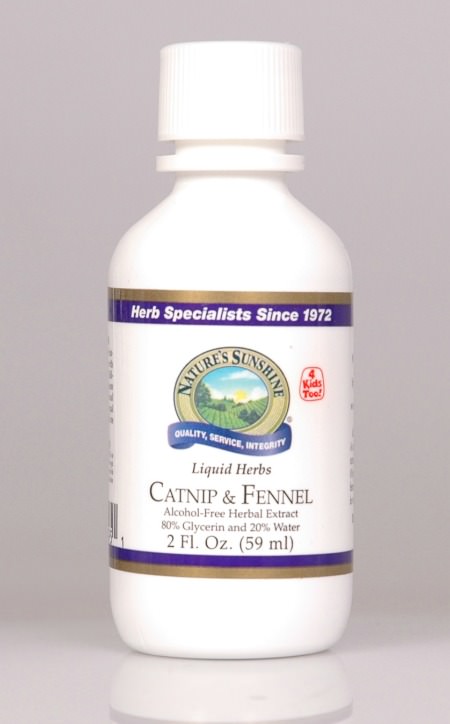Table of Contents[Hide][Show]

For those of you familiar with the various “nursing personalities”, my son was definitely the speed nurser (aka, “Barracuda”), latching on like a little vacuum and suckling with all his might for about 10 minutes on each side until there was nary a drop left.
Because he was such a hungry little fella and nursed so quickly, he suffered from a lot of gas issues due to swallowing quite a bit of air with each feeding.
Granted, some of his gas issues were due to my consumption of pasteurized organic dairy, but I didn’t know at the time that this was part of the problem.
Burping him properly after each feeding helped of course, but he still would get very gassy from time to time and he would cry from the discomfort in his little tummy.
Like any new mother, I wanted to give my baby relief as his cries, especially around sundown, were tough to handle on some days.
The first person I asked for help was my Pediatrician, who immediately recommended Mylicon infant gas drops, an over the counter gas remedy from the pharmacy.
I went to the local drugstore right away and picked up a bottle that had the words “safe for babies” emblazoned on the package. The words also proclaimed that the product was free of alcohol, saccharin or artificial flavors.
Sounded good.
When I got home, however, I started to read the fine print and was dismayed at what I discovered.
Dangers of Mylicon Drops
First of all, the active ingredient in this gas remedy was something I had never heard of before: Simethicone.
I then went from concerned to downright disturbed when I read the inactive ingredients:
Mylicon Drops ingredients: anhydrous citric acid (GMO), benzoic acid, flavors, glycerides (C14-18, mono- and di-), maltitol, methylcellulose, microcrystalline cellulose and carboxymethylcellulose sodium, polyoxyl 40 stearate, polysorbate 65, purified water, silica gel, sodium benzoate, sodium citrate, xanthan gum.
Citric acid almost certainly derived from genetically modified (GMO) corn?
Benzoic acid, a harmful preservative used in cosmetics?
Methylcellulose derived from pesticide residue laden wood pulp?
DNA damaging sodium benzoate linked to Parkinson’s disease, liver damage and hyperactivity in children?
Not in my child’s body, thank you very much!
 Gripe Water Full of Toxic Ingredients Too
Gripe Water Full of Toxic Ingredients Too
When I called the Pediatrician back with my concerns, the receptionist suggested Gripe Water as a safer gas remedy alternative. But examining the ingredients at the pharmacy for this supposedly safe herbal supplement wasn’t impressive either.
Gripe Water ingredients: purified water, sugar (GMO), glycerin (GMO), propylene glycol, sodium citrate, natural ginger flavor, citric acid, xanatham [sic] gum, disodium EDTA.
Sugar?
Citric acid known to likely contain MSG residues and most certainly derived from GMO corn?
Propylene glycol, aka “edible” antifreeze?
Disodium EDTA, a preservative that may cause allergic reactions, asthma attacks, skin rash, and possible kidney damage?
Unreal that this remedy could be considered in any way “natural” or herbally based!
At this point, I felt betrayed by my Pediatrician’s office which had recommended not one, but two gas remedies that were loaded with toxic ingredients. How in the world could putting such chemicals into my newborn’s body, possibly multiple times a day for weeks or months on end until he outgrew his gas issues NOT be harmful?
Natural Gas Remedy for Babies
I decided not to give my son either the Mylicon drops or the Gripe Water and promptly threw the bottle of Mylicon drops I had purchased in the trash.
Next, I picked up the phone and called my midwife for advice instead – something I should have done in the first place even though I was no longer under her care since baby was now several weeks old.
She advised that I buy a bottle of Nature’s Sunshine Catnip and Fennel extract and put a drop on my baby’s tongue after feedings to eliminate gas. Having been burned twice, I was careful to check the ingredients once again. I was relieved when I read the following:
Catnip and Fennel extract: Catnip leaves extract and fennel seed oil in a base of glycerin and water (sources).
At last, a safe gas remedy that had no ingredients that I felt uncomfortable putting in my baby’s body!
But, did it work?
Yes, it did! It worked extremely well in relieving gas and tummy discomfort in my newborn and it was safe to use with every single feeding.
As a bonus, my baby loved the taste too. I continued to use this gas remedy until he was well over a year old. Sometimes I would even use it if he wasn’t gassy as he enjoyed the taste so much and it soothed him a great deal before naps if he was feeling fussy.
This experience was one of my initial introductions to learning the critical importance of questioning what my Pediatrician said and examining for myself whether a medicine or procedure was truly “safe” for my child. Not only might a doctor’s advice be incorrect, but there is likely an equally effective remedy that is completely nontoxic that works just as well and you can feel good about using – if one is open to looking.
More Information
Are You a Tummy Bug Magnet? Fat Phobia May Be the Cause
Slippery Elm for Tummy Aches
Natural Reflux Remedy
Food Poisoning Remedies








Digestzen from doterra works!
The gripe water I use has fennel and ginger in it. I wonder what brand she was looking at?
Tiffany Bodenhorn – this product might be worth a shot?
Mariana Derbli Diab
Jemma Flohr
Interesting read Celece Rizza
Oh, I should add, that my baby started spitting up majorly, to the point if having blood tinged spit up. The pediatrician suggested meds without even considering any other factors. I, however, was not about to give my baby Zantac. That’s when I called the lactation consultant who diagnosed the over supply of fore milk issue and also had me quit all dairy until after baby was 6 mo old.
It was probably more the dairy than anything. Dairy can be an inflammatory food, especially if pasteurized. Inflammation can cause mothers to have oversupply. Oversupply can mean that babies get full before much of the fat is “washed” down to the nipple. Foremilk/hindmilk imbalance is a theory that is no longer accepted as accurate. There’s plenty of info available on that in the lactation world and easily found online in blogs by IBCLCs. And while block feeding, when cautiously used and carefully monitored, can sometimes help moms with an over abundant supply, it has also caused many moms to end up with a low supply and ongoing supply issues. Cutting out inflammatory foods is a better, healthier way to reduce oversupply. There can be other reasons for oversupply, too, such as a baby with poor latch. Mothers’ bodies sometimes respond to their baby’s inability to effectively remove milk by making so much that it basically spills into them, keeping them fed, if not in an ideal way. I just wanted to mention that it’s a very complex issue and block feeding, which so often gets recommended to anyone who thinks they have oversupply (many moms have overactive letdown and misinterpret that for oversupply as well) and can do more harm than good.
Yes, about the pasteurized dairy, I have often wondered whether things would have gone differently if I had had a raw milk source then. (Though, I did have an oversupply issue. Pumping more than 12 oz in a 15 minute session was a common occurrence before block scheduling the feedings got it down to 4-6 oz….. Not that baby ever took more than 3 oz from a bottle at a time… Thankfully I was able to donate to our NICU.)
I was however hoping that the main take away from my comment would be that moms should be contacting a lactation consultant or midwife where available. Sleep deprived + stress of crying baby + Internet forums does not always lead one to logical conclusions.
Not all “gassy babies” are gassy. Mine cried from an imbalance of fore milk / hind milk. Call your local hospital and ask for the lactation consultant. At our hospital this is a free service — even if your baby is born at home or birth center. The lactation consultant invited me to join her nursing moms group the same day I called and there she watched baby nurse, looked at baby’s poopy diaper(green!), asked lots of questions and determined I had too much fore milk. Suggested I nurse on just one side at each feeding instead of switching. No more crying within 12 hours, happy baby ever since. Lactation consultants are saints!
I had the same issue and “block feeding” seemed to solve it. I figured it out on my own through research, but people should definitely use lactation consultants/nursing groups if they aren’t sure what could be the problem.
Emily Armstrong Brooks I thought this was interesting.
Simone Wilkins Genine North